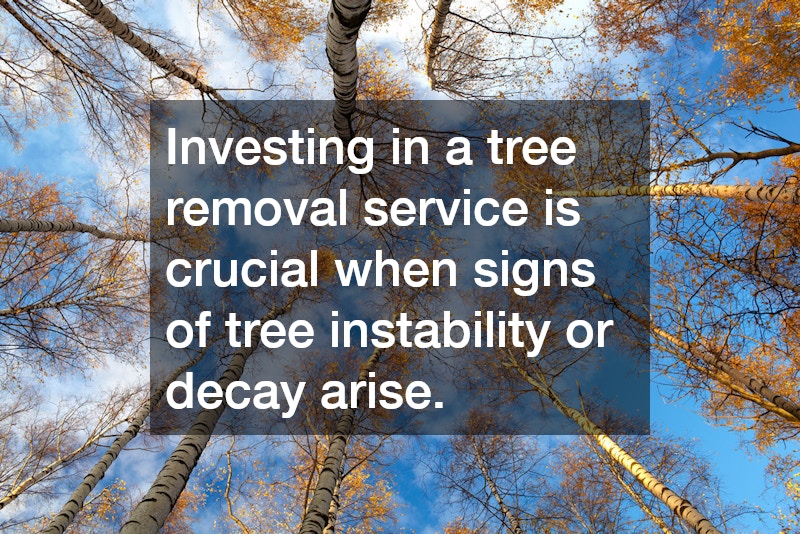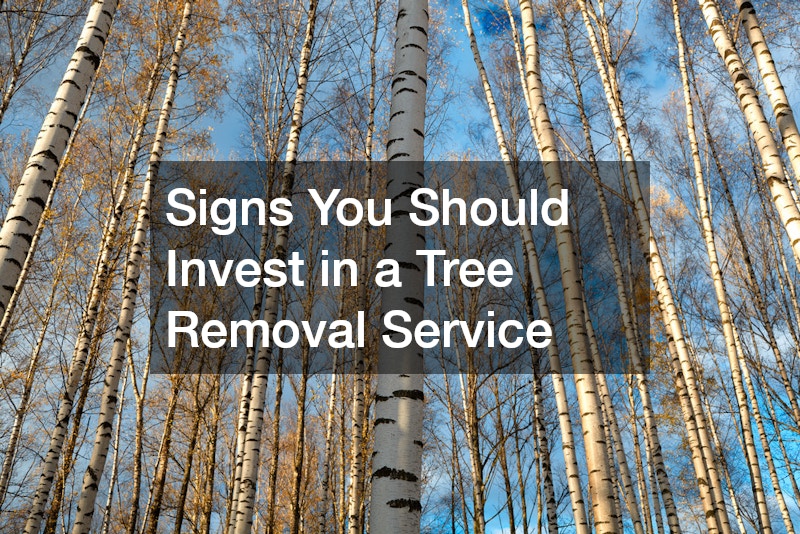Understanding when it’s time to remove a tree from your property can be challenging. This article explores key signs and frequently asked questions about investing in a tree removal service, helping you make informed decisions. A proactive approach to tree maintenance can save significant time, money, and effort in the long run.
How Can You Tell If a Tree Needs to Be Removed?
Visible Signs of Decay
Visible signs of decay are often the first indicators that a tree may need to be removed. Look for symptoms such as fungus growth at the base or trunk, which can signify root rot. Dead branches are also a clear sign, and cracked bark may indicate deeper health issues within the tree.
Fungi or mushroom growth on the trunk or roots often means the internal structure of the tree is compromised. This structural weakening can lead to the tree’s instability, making it more susceptible to falling during harsh weather events. Observing these signs early can necessitate timely intervention, potentially preventing more severe issues down the line.
Assessment of the Tree’s Positioning
The position of a tree plays a critical role in determining its risk level and the necessity of removal. Trees that lean dangerously or are situated too close to homes, fences, or power lines are more likely to pose a threat. Close proximity to structures increases the risk of severe damage should the tree fall or shed heavy limbs.
In some cases, trees grow towards an undesired direction due to sunlight seeking habits, gradually becoming a peril. Root systems extending too close to or beneath building foundations can also lead to structural issues over time. Consulting with a tree professional to analyze the positioning can provide insights into potential risks and available solutions.
Expert Evaluation
An expert evaluation is often the most reliable method of determining whether a tree needs to be removed. Arborists possess the skill and knowledge to accurately assess a tree’s health and structural integrity. They can identify less obvious signs of distress and recommend actions based on their findings.
Involving a professional ensures that any decision to remove a tree is data-driven rather than assumption-based. Arborists can use tools and techniques that most property owners might not have access to, providing a thorough examination of the tree’s condition. Emphasizing expert evaluation not only aids precise decision-making but also fosters environmental conservation.
What Are the Risks of Avoiding Tree Removal?
Potential for Property Damage
Ignoring the need for tree removal presents a high risk of property damage. Diseased or dead trees are more likely to collapse under stressors like heavy winds or snowfall. When trees fall, they can inflict significant damage on roofs, cars, fences, and other structures on your property.
Damage from fallen trees not only incurs repair costs but can also cause potential harm to land value. Insurance may not always cover damage from a neglected tree, leaving homeowners to shoulder unexpected financial burdens. Thus, addressing tree health proactively is essential for safeguarding your property investments.
Safety Hazards
Diseased or damaged trees can pose significant safety hazards to people on or near the property. Falling branches are unpredictable and can occur without warning, particularly in older or unstable trees. Such incidents can result in severe injuries or even fatalities.
The risk of personal harm extends to neighbors and passersby, taking the issue beyond personal responsibility to a broader social concern. Maintaining a safe environment around your property necessitates active management of potential tree hazards. Tree removal services provide the expertise and assistance needed to manage these risks adequately.
Financial Implications
Neglecting tree removal when necessary can lead to costly financial implications over time. Immediate repair costs can be exorbitant, especially if a tree falls and causes structural damage to buildings or vehicles. Additionally, continual outlays for temporary fixes or protective measures can add up over time.
Furthermore, liability concerns arise if a neglected tree damages neighboring properties. In extreme cases, legal action might be pursued, resulting in higher expenses well beyond simple tree maintenance costs. Addressing tree issues upfront with a removal service can prevent these accumulating financial burdens.
Investing in a tree removal service is crucial when signs of tree instability or decay arise. Regular assessment and timely actions can prevent property damage and ensure safety, ultimately saving money and protecting valuable assets. Engaging with professional services supports sustainable property management and fosters a safer living environment.
.











